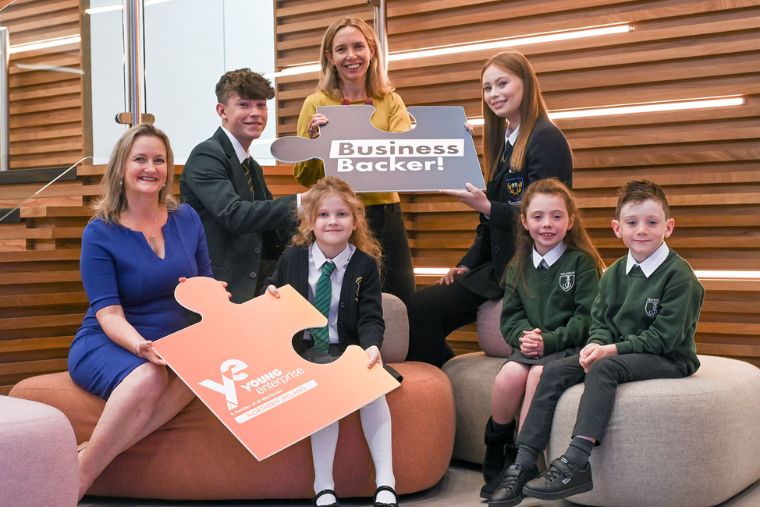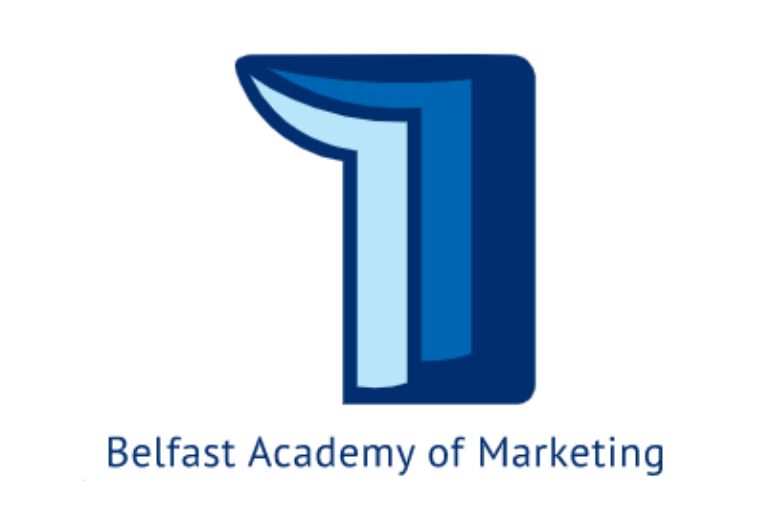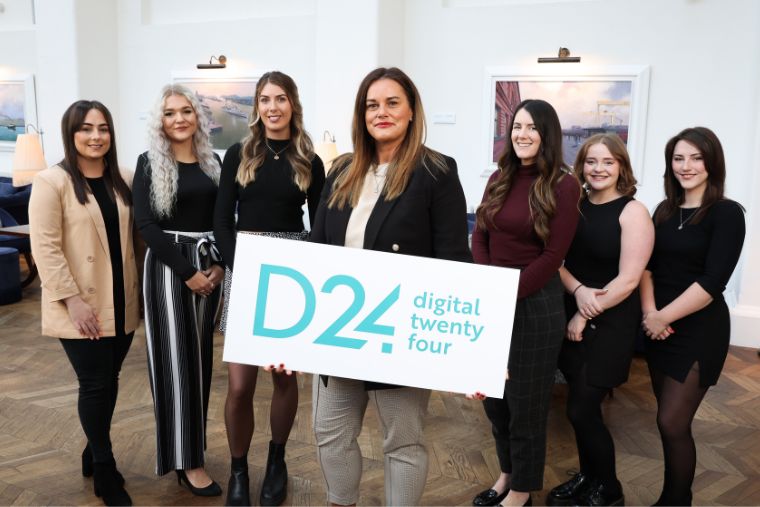How to Create a CV for an Early Careers role to Stand out from the Crowd
Thursday 4 April 2024
.png?lang=en-GB&ext=.png)
What does the student labor and jobs market look like within the NI Technology Sector?
Northern Ireland’s software industry punches above its weight, employing 22,000+ talented people and contributing £1.7 billion to our local economy. The Institute for Student Employers (ISE) Survey 2023 shows that there was 16% growth in student hires in the academic year of 2022-23. So while there are plenty of Early Careers roles available, there is increased levels of competition amongst students in robust yet competitive market. In 2023 Early Careers employers received 86 applications per role (an increase of 23% from the previous year). One reason for this increase is many students impacted by COVID took a break after education to have experiences and are now entering the world of work.
When Gen Z are identifying potential employers to kick start their careers, salary alone is no longer enough. They want an employer who places importance on sustainability, gives back to local communities, promotes a culture where everyone can be their authentic self and will be enrolled in a training academy. This has resulted in anxiety amongst students in securing a role with a market leading Early Careers employer, so they are taking a ‘scatter gun’ approach to apply for multiple roles across these leading companies.
As a result, leading Early Careers employers (such as Kainos) have now seen a trend of students applying with very generic CVs as opposed to tailored CVs.
Which leads nicely onto explaining, what exactly is a CV?
When you are considering purchasing a new gadget, you don’t just buy the first option. You want to consider all which are available to ensure you are getting the best. It is the same for Early Careers employers when we are hiring Apprentices, Placements and Graduates. A CV is a brochure to showcase and sell yourself. It is the first digital impression that a potential employer will have of you so you need to make it count and set yourself apart from the crowd.
It is also worth noting what a CV is not. It is not an auto-biography of every activity you have participated in and award you have won. Only include the information which is recent and relevant that will support your application.
We are often asked, “What is the secret to the perfect CV”? Truth be told, there is no ‘perfect’ CV and no ‘secret’ solution. You will receive different guidance and view points from parents/guardians, schools, colleagues, universities and employers.
So, where do you start with creating a CV for an Early Careers role?
First of all, lets take a look at guidance on the general look and feel of a CV.
Length
While Early Careers employers have many talents, they are not psychic. Due to high volumes, we do not always have the luxury of time to email candidates for missing information. It is important for you to include all relevant information, regardless of the length. Forget the ‘1 page rule’.
Appearance
Use of Templates
Many schools, colleagues and universities will provide students with a template. It is a great way to present your information in a clear and concise manner and in the correct order in terms of importance.
Use of Colour
As you can imagine, for Early Careers employers reviewing hundreds of applications can be repetitive. Colour can be a great tool for capturing attention when used appropriately.
Use of Headshots
Headshots are completely optional. They can be a nice way to put a face to the name in this digital world. However, they should be an appropriate photograph, avoiding use of selfies, emojis and cartoons (which we all love, but there is a time and a place).
Now, lets take a look at the advised order of a CV and the information which should be included.
Personal Details:
Contact Details
Even if you are the ideal candidate, if your contact details are incorrect employers can’t get in touch with you. It may sound obvious, but read over and double check your contact details. It is advised to use your personal email as opposed to your academic. Reason being is employers do not expect you to check your academic email on weekends or during holidays, we want to ensure that you do not miss any updates on the status of your application.
Location
It is important that if you are applying for a role in a different location to where you are currently residing, that you make this clear. Otherwise, an employer may think that you have not read the job description or accidentally applied to the wrong role.
Links to work
Employers absolutely welcome you to include links to your work to showcase your ability! They can act as an extension to your CV. These could include links to your LinkedIn, portfolio, website or GIThub.
Personal Summary:
If done correctly, this removes the need for a cover letter.
A Glimpse into You
Think of this like an introduction or a blurb to a book, it is an opportunity to give an employer a quick glimpse into you before reading the remainder of your CV.
Showcasing an Awareness of the Employer and Role
What sets a CV apart is doing this straight away! Here is a quick guide on how to:
- Mention the name of the employer and the role that you are applying to
- Provide the reason that you are attracted to them as a potential employer (this could be the awards they have won, clients that they work with, projects they work on, culture and values they foster or the training academies)
- Provide how you were made aware of this information (this could be through family, careers fair, guest talk, employer open evening or in the news)
By doing so, employers know that you are already engaged and interested! Employers will be more interested in proceeding with your application over someone with none or a generic personal summary.
Academic Information
Order
You want to ensure that you list your academic information in reverse chronological order, this means starting with the most recent and working backwards. For those applying for Graduate and Placement roles, this will mean starting with University. For those school leavers applying for Apprenticeships, it will mean starting with school or college.
Detail
For each, you want to include the name of the academic institution, the duration which you attended (start and end date), level of certification, subject and predicted or obtained grade. For Placement and Graduate Applicants, this should include module titles and predicted and obtained grade. You must demonstrate the ask of the minimum requirement in the job advert. Employers do not always have the luxury of time to email Early Careers candidates to provide missing information.
Course Projects
You want to list the projects which you have undertaken during your course to include whether they were individual or group and also to include any of the languages or technologies used.
Extra-Cirricular Activities
One of the easiest ways to stand out from your peers is to demonstrate your passion. Early Careers employers hire based on ability but also passion and potential. It is vital that you demonstrate how your passion for the subject (in Kainos’ case technology) extends beyond the classroom. Here is a quick guide to doing so:
Within academics, but beyond the classroom. This could include:
- For Apprentice applicants, running or participation in an IT club or mentoring to support younger students to deepen their understanding of tech
- For Placement and Graduate applicants, this could running or participating in a computing society, acting as a course representative or a mentor
Beyond academics, into local tech communities. This could include:
- For Apprentice applicants, participating in employer tech outreach events such as work experience and coding camps
- For Placement and Graduate applicants, participating in events such as NI Developers Conference (NIDC), Hakathons and Women who Code
Self-learning in your own time. This could include:
- Keeping up to date with tech industry trends
- Exposing yourself to new technology and self-teaching through blogs, tutorials and online resources such as Udemy and FutureLearn
- Designing personal projects using hardware and/or software
- Putting yourself through certifications online such as AWS
Work Experience and Volunteering
Early Careers employers are always asked, “Is there any point in including work or volunteering experience if it isn’t in this relevant sector”? Of course! Many Early Careers candidates work part-time in hospitality and retail around their studies. These are very similar environments to tech (fast paced, dynamic, demanding) through which you will have gained transferable skills which are essential for tech (organisation, teamwork, communication).
Order
You want to ensure that you list your experience in reverse chronological order, this means starting with the most recent and working backwards.
Detail
For each, you want to include the name of the employer or charity, the duration which you attended (start and end date) and the position which you held. You then want to list the duties that you carried out within this role. This does not need to be granular.
Hopefully whether you are student considering applying for an Early Careers role in the technology sector, or a parent, guardian or care giver supporting your child or dependent, you will now feel better equipped!
Author: Hannah Fleming, Early Careers Talent Acquisition Partner (Digital Services) at Kainos
Connect with Hannah on LinkedIn
Sources:
SyncNI | ISE
Author Hannah Fleming
Thursday 4 April 2024




 Contact us
Contact us
 Share on social
Share on social Share with a friend
Share with a friend Facebook
Facebook LinkedIn
LinkedIn
 Twitter
Twitter



















 Get in touch with us
Get in touch with us